Praise for Parallax
An accessible and charming history of how we know what we know about our place among the stars.
Providence Journal
Alan Hirshfelds engaging account moves to a satisfying climax as the exciting race to find stellar parallax heats up. Its a thrilling detective story!
Owen Gingerich, Research Professor of Astronomy and the History of Science, Harvard-Smithsonian Center for Astrophysics
An enthralling, behind-the-scenes glimpse into the lives of ... heroic stargazers.
Science News
Writing in the genre of Dava Sobels Longitude, Hirshfeld sheds light on the important problem of finding our cosmic place.
David Levy, science editor, Parade
[Parallax shows] historic figures as people, full of false hopes, fear of failure, jealousy, victory, and joy. This comprehensive work... will appeal to astronomy buffs and curious readers alike.
Astronomy
Alan Hirshfelds authoritative and gripping tale of the search for stellar parallax makes me proud to be a part of such a relentlessly curious and persistent species.
Chet Raymo, columnist, The Boston Globe, author of 365 Starry Nights, and professor of physics and astronomy at Stonehill College in North Easton, Massachusetts
This book is not just a keeper; it will also become a gift.
Sky & Telescope
In this thrilling history of the search for parallax, Hirshfeld urges us to fly together. The human failures and frustrations and the crucial discoveries in the quest for parallax are as thrilling as the story of the determination of longitude, and just as important.
Jane Langton, author of two astronomical mystery novels, Dark Nantucket Moon and The Shortest Day
I thoroughly enjoyed reading this excellent book. It is an admirable account, and Im sure it will be of great value to many readers.
Sir Patrick Moore, host of the BBCs The Sky at Night
Hirshfeld breathlessly annexes familiar astronomical legends ... and his social history ... engages.
Publishers Weekly
Parallax is a fascinating celestial detective story, written in a beautifully lucid, engaging style.
Dorrit Hoffleit, senior research astronomer, Yale University
Parallax, like Dava Sobels Longitude, is a wonderfully told story of the challenge of measuring our place in the universe. It reaches the stars and the ride is exciting and irresistible.
Margaret J. Geller, Smithsonian Astrophysical Observatory
Fun, readable, humorous, gripping, fascinating, sophisticated, informative, and suspenseful all at the same time. And its about astronomy. Wow.
Metrowest Daily News
With this highly readable and cosmically accessible book, Alan Hirshfeld has done for the measurement of the cosmos what Dava Sobel did for the measurement of longitude. Readers will never again look into the night sky the same way.
Michael Shermer, publisher, Skeptic magazine, author of Why People Believe Weird Things and How We Believe: The Search for God in an Age of Science
A delightful history of a crucial advance in knowledge.
Booklist
Alan Hirshfeld has done a magnificent job of telling the story of the race to measure the cosmos. His perspective, in keeping with the best tradition of astronomical history, provides rich insight into the progress and personalities of those who push technology along its cutting edge.
Leif J. Robinson, editor emeritus, Sky & Telescope
PARALLAX

A ian Hirshfeld, Professor of Physics at the University of Massachusetts Dartmouth and an Associate of the Harvard College Observatory, received his undergraduate degree in astrophysics from Princeton and his Ph.D. in astronomy from Yale. He is author of Parallax: The Race to Measure the Cosmos, The Electric Life of Michael Faraday, and Eureka Man: The Life and Legacy of Archimedes, as well as a forthcoming title about the birth of modern observational astronomy. A regular reviewer of science books for the Wall Street Journal, he has lectured at educational institutions nationwide about scientific history and discovery.
ALAN. W. HIRSHFELD
PARALLAX
The Race to
Measure the
Cosmos
Dover Publications, inc.
Mineola, New York
Copyright
Copyright 2001, 2013 by Alan W. Hirshfeld
All rights reserved.
Bibliographical Note
This Dover edition, first published in 2013, is a revised and updated republication of the paperback version of Parallax: The Race to Measure the Cosmos, first published in 2002 by Henry Holt and Company, New York. It was originally published in hardcover in 2001 by W. H. Freeman and Company, San Francisco. The author has provided a new Postscript for this Dover edition.
Library of Congress Cataloging-in-Publication Data
Hirshfeld, Alan
Parallax : the race to measure the cosmos / Alan W. Hirshfeld. Dover ed.
p. cm.
This Dover edition, first published in 2013, is a revised and updated republication of the paperback version of Parallax: the race to measure the cosmos, first published in 2002 by Henry Holt and Company, New York. It was originally published in hardcover in 2001 by W. H. Freeman and Company, San Franciso. The author has provided a new postscript for this Dover edition.
Includes bibliographical references and index.
eISBN 13: 978-0-486-31591-1
1. ParallaxStars. I. Title.
QB813.H57 2013
523.8'1dc231
2013003386
Manufactured in the United States by Courier Corporation
49093901 2013
www.doveipublications.com
 To Sasha, Josh, and Gabe,
To Sasha, Josh, and Gabe,
the stars of my universe
Contents 
Introduction 
M eet the photon. Not just any photon. Your photon.
What is a photon? The fundamental unit of light: a submicroscopic jot of pure energy, an astronomical Hermes delivering the message of the stars. Nothing appears to distinguish your photon from the trillions of others that breach the surface of the distant star. All are descended from photons born in the stars fiery core. All have survived the turbulent, outbound journey through the stars gaseous envelope. In fact, only one thing sets your photon apart from the others streaking into outer space. This photon is destined to enter your eye. This photon belongs to you.
Your photon never slows along its journey through interstellar space, never strays from its straight-line course. After centuries in the void, it plunges into the Earths atmosphere, fortuitously avoiding annihilation by air molecules and dusty pollutants. Meanwhile, darkness has fallen on your side of the Earth. Strolling underneath the night sky, you look up. The photon enters your eye, strikes your retina, and turns over its luminous energy to the biochemical process we call sight. Your photon, plus countless others that precede and trail it, paint in your consciousness the impression of a luminous speck in the heavens. On this clear, dark night, thousands of such specks are visible, altogether a twinkling stellar tapestry arching high above your head. This is the visual siren song that has beckoned observers like yourself since the dawn of humanity. And it is the sight that started me, now some forty years ago, on the road to becoming an astronomer.

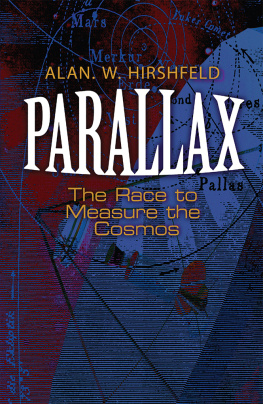
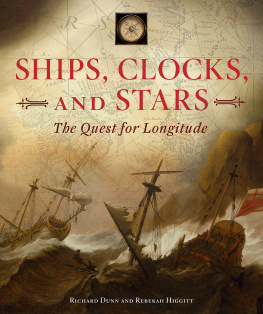

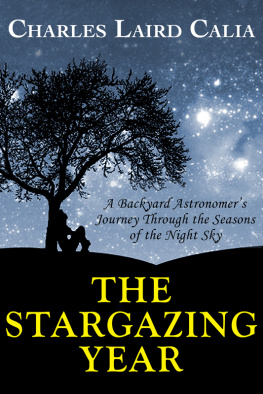
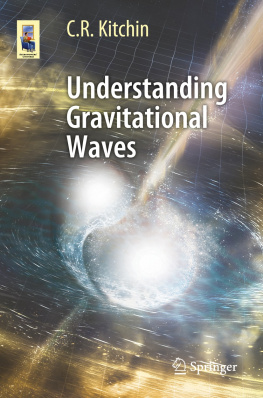
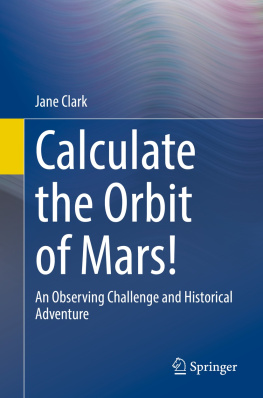




 To Sasha, Josh, and Gabe,
To Sasha, Josh, and Gabe,